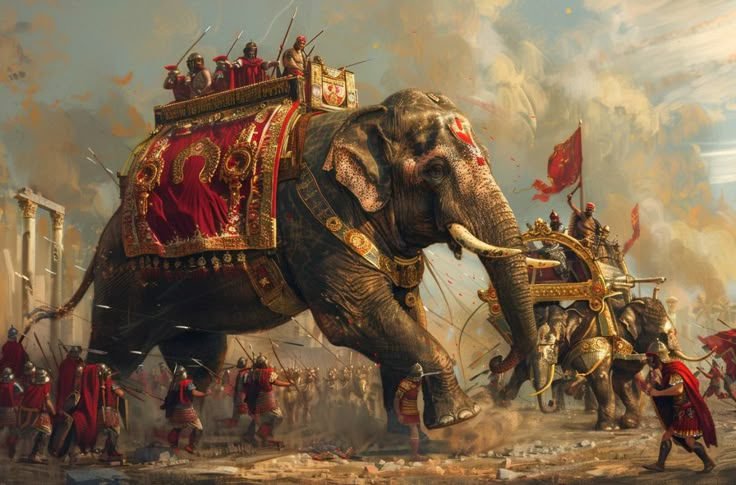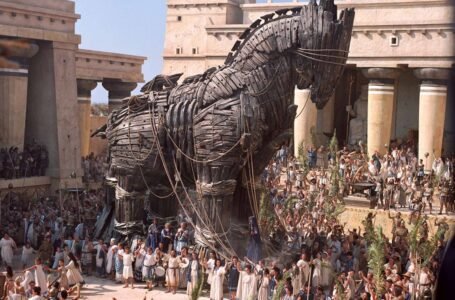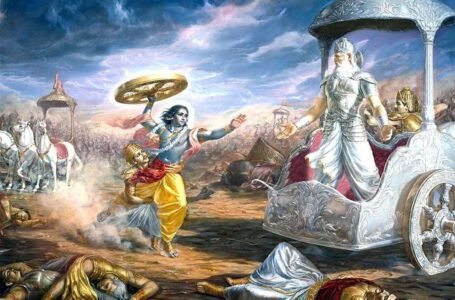The Elephant Warriors of Ancient India: Power, Precision, and the Science of Strategy

~Vani Mishra
Among the imposing monuments of ancient Indian warfare, none inspired more veneration or strategic worth than the war elephant. Greater than a beast of burden or tool of terror, the elephant was an extensively integrated element of statecraft, military science, and ritual authority throughout the Indian subcontinent. To study the legacy of India’s elephant warriors is not simply to learn zoological military history. It is to be involved with a whole worldview, especially one that melded ecology, engineering, warfare, and metaphysics into a cogent and rational art of power. While most of modern military studies revolve around metallurgy, infantry deployment, or sea power, ancient Indian martial traditions built a distinctive body of knowledge about the employment of elephants. It was not a contingent cultural bias. It was an intellectually evolved military specialization with centuries of intellectual basis.
Origins of the Elephant Corps
The Indian domestication and militarization of elephants go as far back as the late Vedic period, although it developed considerably during the Mahajanapada and Mauryan periods. Elephants occur with great regularity in texts as early as the Rigveda, and are there depicted as wild and intractable, though magnificent. By the period of the Atharvaveda, and particularly in Kautilya’s Arthashastra, elephants were well established in military thought.
The Arthashastra, written from the 4th century BCE to the 2nd century BCE, gives minute guidance on administrative and military matters of acquiring, training, categorizing, deploying, and treating elephants. It is a text not of legend but of scientific administration. Kautilya makes a distinction between forest elephants, domesticated elephants, rogue males, and royal war elephants. He recommends construction of stable buildings, the deployment of decoys in trapping wild herds, and regulations for feeding and healthcare. He goes so far as to mention the political significance of giving elephants as a tool of diplomacy.
This institutionalized model of elephant warfare shows the level of planning and economic outlays that were devoted to the upkeep of an elephant corp. It was not wild animals brought onto the battlefield but trained units, with backup from logistics, veterinary technology, and professional mahouts, who were a separate class among the military ranks.
Strategic Role in Warfare
The military uses of elephants extended well beyond the spectacle of size. In ancient Indian combat, elephants were multi-purpose. They were used in shock charges, breaking up enemy formations, breaching defences, and psychological operations. Their ability to bear towers (howdahs) on their backs enabled archers and spearman to achieve tactical height above the battlefield. They could trample infantry lines, break chariots, and even stand against enemy cavalry with sheer muscle power.
The Mauryan Empire of Chandragupta and his successor Ashoka had one of the biggest and most disciplined corps of elephants in ancient times. Greek historians like Megasthenes, who had been ambassador to the Mauryan court, wrote about there being thousands of tamed elephants kept in specially appointed garrison towns.
A notable example in point is the Battle of Kalinga, fought about 261 BCE. Although it is most famously recalled as a turning point in Ashoka’s moral evolution, it also showed the sheer scale of the use of elephants by both sides’ military machinery. The Kalingan forces were famed for their extensive utilization of elephants, and Ashoka’s troops, victors though they were, lost a great many casualties—many delivered by elephant charges.
Many centuries later, the Chalukyas, Rashtrakutas, Cholas, and then the Vijayanagara Empire each had elephant units as part of their armies. Even in the early battles against Islamic sultanates and Central Asian conquerors, elephants remained to be used, although their value from the strategic point of view started to decline with gunpowder and mobile artillery.
Elephant Training and the Science of Mahoutship
Breaking a war elephant in would need an intimate knowledge of the animal’s psychology, behaviour, and repetitive conditioning. Elephant husbandry science was systematized in ancient Sanskrit treatises like the Gajaśāstra and Hastyāyurveda. These sources describe practices for categorizing elephants by temperament, physical attributes, and astrological signs. More significantly, they describe precise regimes for diet, training drill, hygiene, and even emotional health. The mahout-elephant bond was focal. In contrast to cavalry horses, which were quickly replaced and retrained, war elephants established long-term attachments to their handlers. An effective mahout needed to interpret subtle behavioural cues, maintain the emotional state of the elephant in combat, and react accurately to commands. The complexity of these interactions suggests a sophistication in psychological processes in ancient Indian animal husbandry practices. Commands were given through certain sounds, body pressures, and instruments like goads and hooks. A well-trained elephant could differentiate between battle and ceremonial duties, move independently during combat, and return under signal without fear. Some were instructed to carry weapons in their trunks, or to utilize their tusks as native battering rams. The functions of elephants went beyond warfare. They were employed in siege warfare for pulling up palisades, breaching gates, and terrifying defenders. In times of peace, they had roles in state rituals, bore royal emblems, and took part in religious processions, thereby reaffirming their link to royal authority and divine mandate.
The Cultural and Symbolic Significance
The war elephant was not used solely for a utilitarian function. It was deeply symbolic. The elephant in Indian iconography is a symbol of strength, wisdom, and royalty. Ganesha, the god who oversees beginnings and obstructions, has the head of an elephant. Airavata, Indra’s heavenly elephant, carries the king of the gods into combat in the celestial sphere.
This symbolic system was not coincidental. It served to legitimize the role of elephants in statecraft and consolidate the ideology of the ruler. A king who had elephants at his disposal was considered one who wielded both brute force and divine authority. Elephant motifs are regularly found on royal seals, coins, and inscriptions in ancient and medieval India, suggesting their strong involvement in state identity. Festivals like the elephant procession during Mysore’s Dasara or the ancient tradition of elephant parades in Kerala exemplify how martial symbolism was translated into public spectacle. Elephants were become mobile expression of the stability, grandeur, and power of the state.
The Encounter with Modernity
The efficiency of elephants as a fighting force started to decrease with the invention of firearms, muskets, and particularly cannons. Although early employed with primitive artillery in the Mughal emperors’ armies, their susceptibility to gunpowder weapons minimized their frontline fighting role. By the late Middle Ages, elephants were mainly relegated to ceremonial duties or supply support. Yet their presence continued in colonial documents. The British East India Company, for example, had elephant transport units and integrated them into imperial expedition logistics. British officers frequently noted the Indian elephants’ intelligence, memory, and fidelity, but misunderstood or downplayed their deeper cultural meaning.
By the time India emerged into the modern world, the elephant warrior had become a figure of the past. However, their memory remains stamped across temples, literature, sculpture, and oral tradition. Contemporary conservation projects and forest departments still depend upon mahouts trained in centuries-old methods.
Conclusion
The Indian elephant warriors were not oddities of unusual warfare. They were the culmination of a highly sophisticated system of ecological understanding, animal psychology, political philosophy, and strategic wisdom. The nurturing, training, and usage of these animals speak of a civilization that did not just utilize nature but worked alongside it. Their history is more than a page of war. It is a testament to the refinement of a culture that bridged science, symbolism, and power with meaning. In our present era of mechanized violence and environmental despair, the tale of the elephant warriors provides a different model one that married power with restraint, technology with compassion, and warfare with philosophy.


